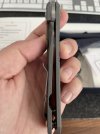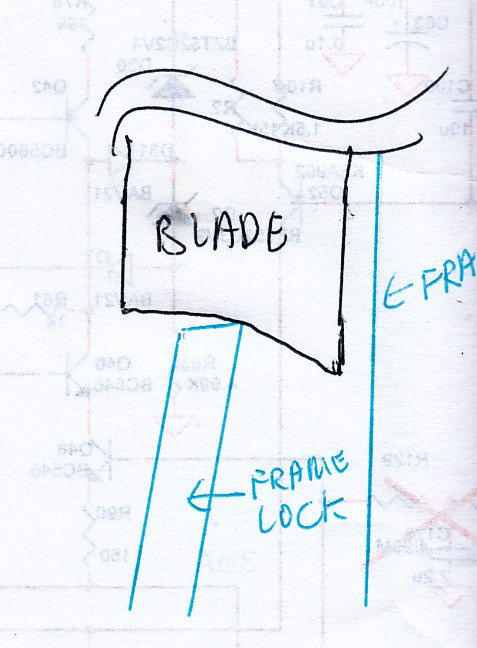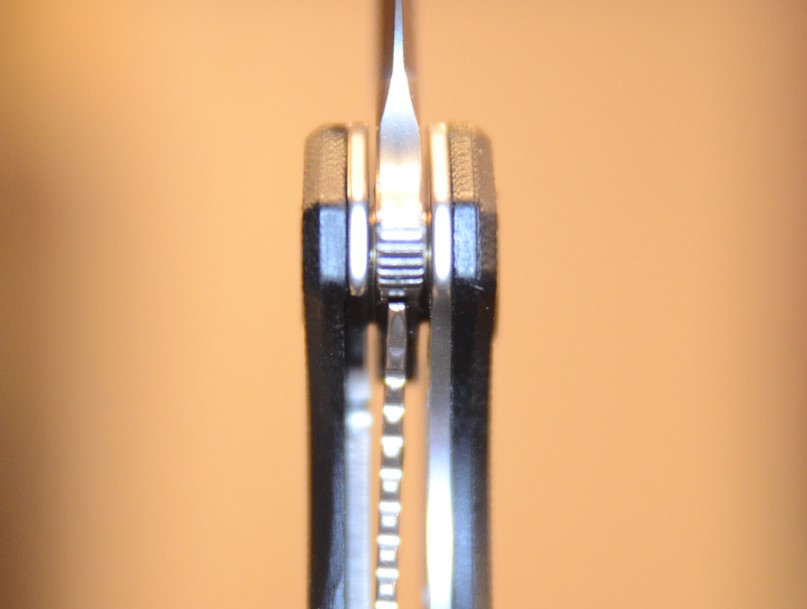Hi, I want to get advice how to sand the frame lock shown in the diagram:

As show on the left, the frame lock is at the bottom of the blade as show to keep the blade lock. Problem with my knife is the frame lock(RED) does not move deeper under the blade. I want to sand the frame lock down a little so it move more to the middle of the bottom of the blade as shown in GREEN to get a safer locking.
My question is what angle should I sand the frame lock. Should I grind it totally flat like in (a), or should and slant it a little like in (b) so it contact the bottom of the black at the far right edge only.
Any advice is appreciated.
thanks
Alan

As show on the left, the frame lock is at the bottom of the blade as show to keep the blade lock. Problem with my knife is the frame lock(RED) does not move deeper under the blade. I want to sand the frame lock down a little so it move more to the middle of the bottom of the blade as shown in GREEN to get a safer locking.
My question is what angle should I sand the frame lock. Should I grind it totally flat like in (a), or should and slant it a little like in (b) so it contact the bottom of the black at the far right edge only.
Any advice is appreciated.
thanks
Alan
Last edited:






